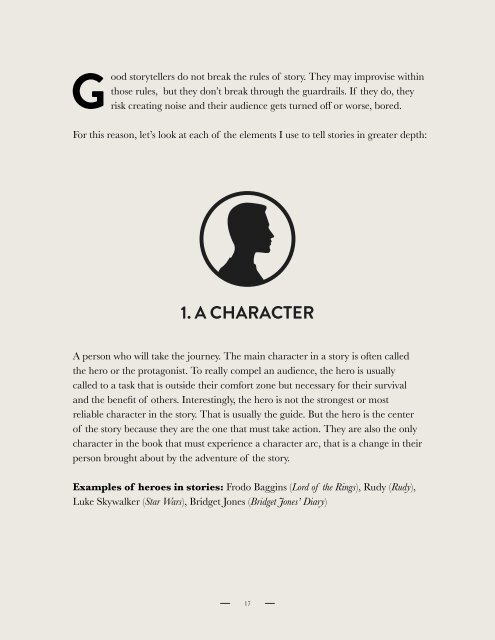You also want an ePaper? Increase the reach of your titles
YUMPU automatically turns print PDFs into web optimized ePapers that Google loves.
ood s<strong>to</strong>rytellers do not break the rules of s<strong>to</strong>ry. They may improvise within<br />
those rules, but they don’t break through the guardrails. If they do, they<br />
risk creating noise and their audience gets turned off or worse, bored.<br />
For this reason, let’s look at each of the elements I use <strong>to</strong> tell s<strong>to</strong>ries in greater depth:<br />
1. A CHARACTER<br />
A person who will take the journey. The main character in a s<strong>to</strong>ry is often called<br />
the hero or the protagonist. To really compel an audience, the hero is usually<br />
called <strong>to</strong> a task that is outside their comfort zone but necessary for their survival<br />
and the benefit of others. Interestingly, the hero is not the strongest or most<br />
reliable character in the s<strong>to</strong>ry. That is usually the guide. But the hero is the center<br />
of the s<strong>to</strong>ry because they are the one that must take action. They are also the only<br />
character in the book that must experience a character arc, that is a change in their<br />
person brought about by the adventure of the s<strong>to</strong>ry.<br />
Examples of heroes in s<strong>to</strong>ries: Frodo Baggins (Lord of the Rings), Rudy (Rudy),<br />
Luke Skywalker (Star Wars), Bridget Jones (Bridget Jones’ Diary)<br />
17



